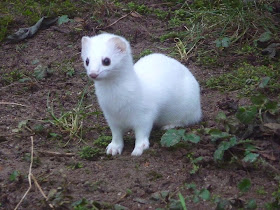But today I'm here to talk about that sweet grazing ungulate, Mrs. Deer, and all her herd mates and the adorable deer children, and all the unbridled havoc they can commit in the garden.
 |
| Mrs Deer |
Look at that sweet face! Such a face! Guileless, gentle, wholesome and...HEY WAIT A SECOND THAT FACE IS FULL OF MY COLLARDS! PASS THE WINCHESTER, FARM GIRL!
No no no! This is overreacting. You cannot possibly blow away every deer that invades the chard patch. And why would you want to, - except for that distressing habit they have of spreading tics and with them, Lyme Disease. Mrs. Deer is nearly as easy to control as Mrs. Bunny, and with no violence at all required. (Unless you like venison with your collards, of course)
Build a fence! This is always part of the answer, you cannot have a vegetable garden in a rural environment without a fence. And for Mrs. Deer, as with Mrs. Bunny, chicken wire is adequate.
Three feet, however, is not. You want a minimum of eight feet for deer, and it is far, far better to go with 10 feet.
Hey, there is benefit as well. Fencing makes terrific trellis material. Your beans and cukes will be deeply appreciative of the tall trellis.
If the wire is tautly strung and the fence is well maintained, this will keep Mrs. Deer on the outside looking in with no need for electrifying the fence. But fail to build it, and trust me, they will come, dinner napkins in place. In that case, you may have a somewhat less edifying view of Mrs. Deer.
By the way, it seems the people producing predator urine products are not pleased that we never recommend them. Well, if they definitely worked, 100% of the time, we would, but they do not. Even if they were effective, rain washes the scent away and weakens any deterrent value that they may have. Gardeners are at fault, failing to keep the deterrent fresh. And eventually the hungry critters do figure it out. It may smell like T-Rex whiz around the eggplant, but there isn't a Rex in site. And kiss the corn goodbye.
 |
| GUILTY AS HELL |



























